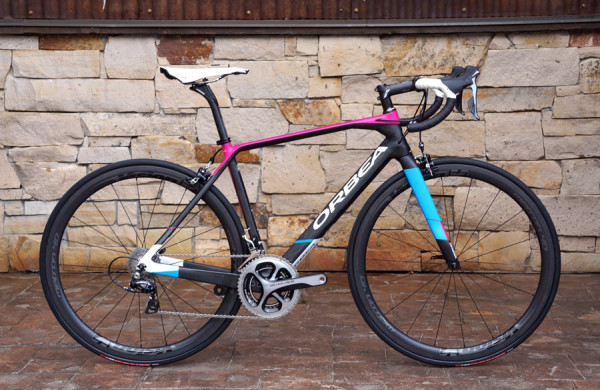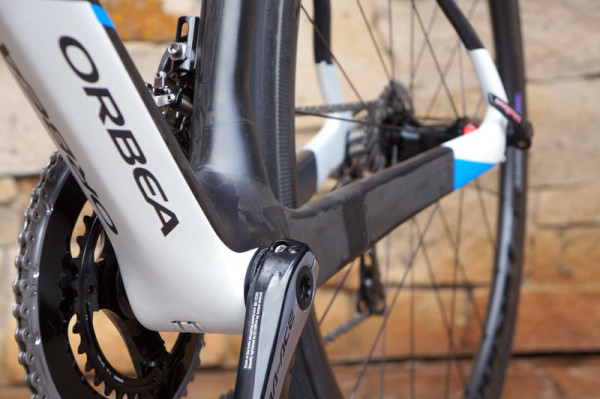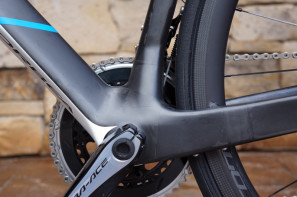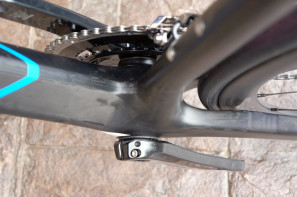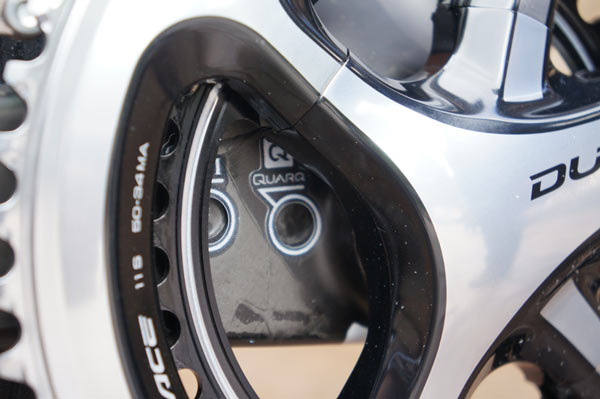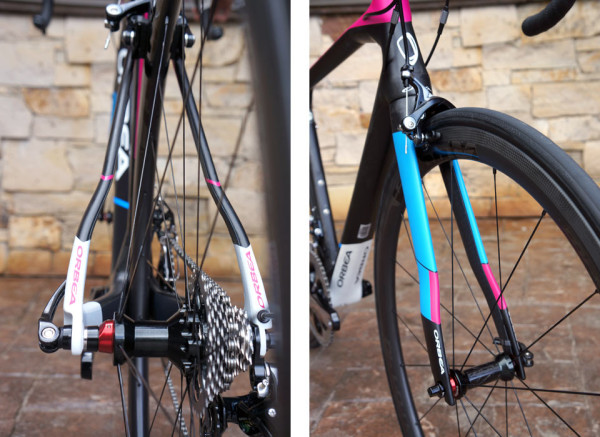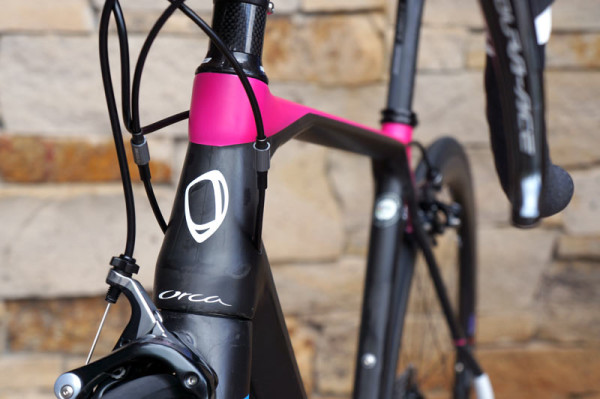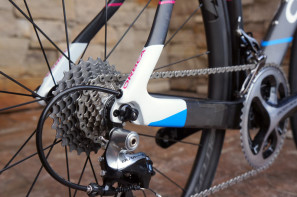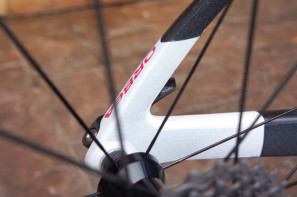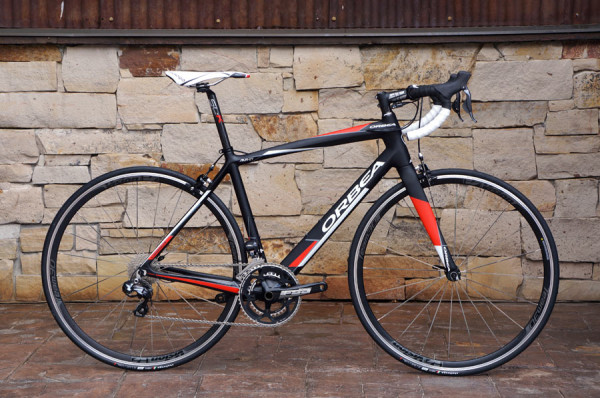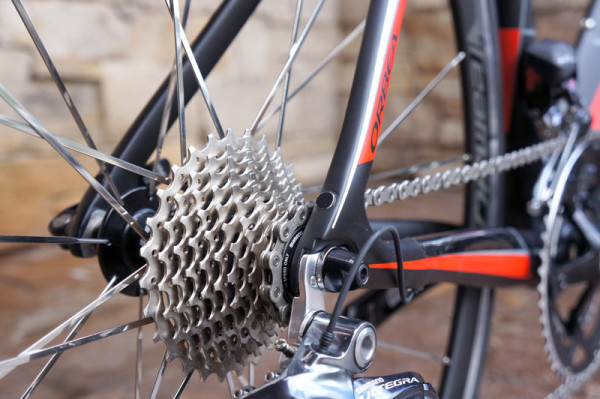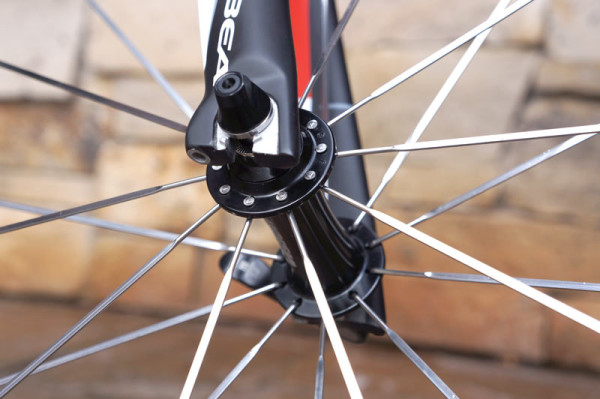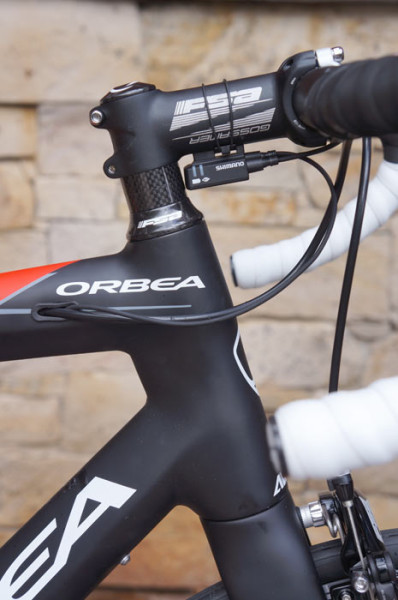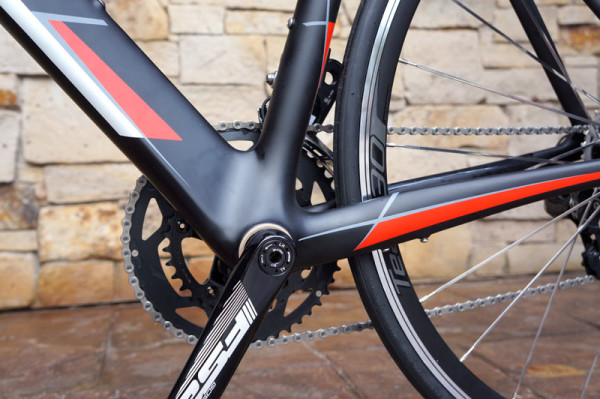The Orbea Orca was introduced in 2003 and has seen updates in 2006, 2008, 2010 and, now, 2014. Goals for the latest iteration were weight reduction, improved efficiency, better torsional stiffness and slippier aerodynamics.
The first one was accomplished in great fashion – they achieved a massive 20% frame weight reduction on the Orca OMR Race level frames.
To do that they went back to a standard round seatpost with traditional collar. The frame construction uses refined EPS molds inside the tubes that improve compaction, letting them use less material and resin without hurting strength and durability. They also minimized the number and size of alloy inserts. The new frame is 900g, down from 1132g. That’s about a half pound savings on a 53 frame size!
For the OMP Performance level frames, weights went from 1,230g to 1050g, a 15% savings.
That’s all well and good, right? But there are 700g frames on the market, right? Well, they bought a lot of competitor bikes, stripped them down and measured actual frame weights and found that 53cm frames were almost all over 900g. Even the ones that claim to be sub 800g…
But weight’s only part of the story. The new Orca Race is 24% stiffer thanks to a bigger downtube, wider BB shell and massive chainstays. The Performance frames are 18% stiffer than prior models.
One of the claimed features is power meter compatibility. Virtually every frame is, really, but the Orca adds magnet slots for a few of the more popular models to make it a little sleeker.
Comfort (aka Efficiency) is bumped up by 62%. That’s a bit of a fuzzy metric, but here’s how they did it: The entire top half of the bike (top tube, seatstays and seat tube) are made to flex together to allow the saddle to move up and down in response to bumps. The design and flex is borrowed from their Alma mountain bike hardtail. There’s a 2.8mm improvement in deflection at the saddle (up from 4.5mm to 7.33mm) in the new model.
That comfort improvement also makes the bike more efficient. By taking up the bumps and vibrations, the rider’s power output is better used for forward motion, particularly over rougher surfaces, and they’re less fatigued.
Aerodynamics were enhanced with a new fork, similar to what’s on the Avant, giving the more important leading edge a better face. That was the only intentional change in reducing drag, and they say it gave the entire bike a lower drag number in the wind tunnel.
Frames are electronic and mechanical ready. Several colorways are available, each with subtle graphics treatments hidden on the inner sides of the tubes.
Their hierarchy is OMR (Race) at the top, OMP (Performance) in the middle and OME (Evolution) at the bottom, and for 2015, the Orca comes in OMR complete bikes ranging from $4,999 to $11,999 and OMP from $2,799 up to $4,999.
2015 ORBEA AVANT
Avant gains a new lower priced model that’s rim brake only. Introduced last year as an endurance model with a rim-or-disc brake compatible frame, the added model brings a more affordable, rim brake only option.
The new Avant Performance OME is the entry level carbon model that gets new seatstay shaping to make it UCI legal. The original’s seatstays kicked out at the bottom (much like the Orca’s, above) to accommodate disc brakes. Since this model is rim brake only, they could make them straight enough to fall within UCI guidelines.
Side note: The Orca bikes from a few years ago had a very dramatic angled kick at the bottom of the seatstays. Shortly thereafter, the UCI changed the design regulations, hence the less articulated design of the prior update and this latest model.
Also note the rack/fender mounts at the base of the seatstays.
The fork hides its fender mounts underneath, just behind the dropout.
The Avant has a taller head tube and longer wheelbase than the Orca, making it a bit more stable and comfortable over the long haul. Cable routing has also been reworked from the higher end models.
Claimed frame weight is 1,300g. Retail for the new $1,750 up to $3,700.
